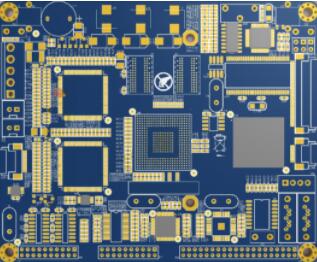As we all know, when planning a PCB high-frequency board, if it is just an ordinary board, it is enough to do a precise planning of the mechanical scale. However, if you encounter high-frequency signals, load lines or long lines, etc., these lines must be specially treated. Otherwise, it is likely to cause a series of signal disturbances such as reflections and crosstalk between lines. problem. Therefore, when we are doing circuit planning, especially when doing high-speed PCB planning, we must do a good job in line signal imitating interference, and shielding measures are often necessary. The following editor of ipcb will talk about PCB high-frequency board wiring, and how to do electromagnetic compatibility planning?
1. Appropriate wire width
When selecting the wire width, it is necessary to ensure both electrical performance and easy production. It is usually confirmed by the minimum current value it accepts. In order to reduce the electromagnetic disturbance impact of the transient current on the high-frequency board printed board, it is necessary to control the line width in the planning. Transient disturbance is generally caused by the inductance of the wire, and its inductance is proportional to the length of the wire and inversely proportional to the line width. Regarding signal lines, there are often very large transient currents, and short and wide wires should be adopted. If the layout space allows, the grid layout structure of the tic-tac-toe type should be used as much as possible.

2. The main points of high-frequency board element equipment wiring
In the planning of meta-equipment wiring, several aspects are mainly considered:
The first is the orientation of the placement; whether the plan is beautiful and tidy, whether it is convenient for function testing, later interface and connection use.
The second is the electrical performance. When wiring, we try to put the equipment that is closer to the connection together. The layout of the high-speed line should be as short as possible, and the power equipment and small signal equipment should be separated.
Third, in a high-speed system, the transmission delay of grounding and interconnecting lines is also the first planning factor that we need to consider. The transmission time of signal transmission lines has a great influence on the overall system speed of the circuit. If high-speed lines are used. The use of ordinary interconnect lines will increase the delay time, which will greatly reduce the system speed.
3. Wiring rules for high-frequency and high-speed signals
Normally, equal wiring can reduce the inductance between wires, but in order to suppress the crosstalk of high-frequency board/PCB circuit wires, we should try to avoid long-distance equal wiring when planning the wiring of high-frequency boards; when planning printed wires, we should Avoid sharp corners, try to plan the high-frequency board/high-speed PCB to have a uniform curve with a certain radian; there are high-current components on the circuit, and try to separate the ground wire to avoid noise interference, small signal or sensitive signal wire Set the ground between them; high-speed signals use differential signal wiring planning, so that the two differential lines in the positive and negative pairs are always coupled to each other on the transmission line, which effectively reduces the electrical noise effect of the signal.